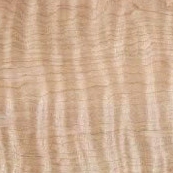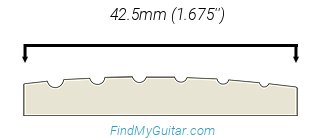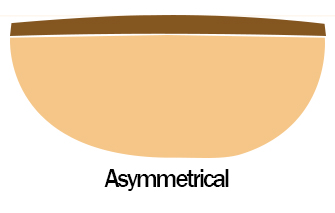Takamine GD35CE vs EF250TK
Reasons to Get
Takamine GD35CE over EF250TK
Reasons to Get
Takamine EF250TK over GD35CE
Other Key Differences
Takamine GD35CE vs EF250TK
Shared Features
Takamine GD35CE vs EF250TK
Common Strengths
- Solid Top Wood
- High-Quality Nut
- Top Pickup Brand
- Expensive Wood
Common Weaknesses
- Solid Side Wood
- Solid Back Wood
- Pickup Alter Switch/Knob
- Locking Tuners
- High-Quality Frets
- Compound Radius Fretboard
- Luminescent Sidedots
- Strap Lock
- 21:1 Tuner Ratio
- Active/Passive Preamp
Price History Comparison
These are affiliate links. We may earn a fee if you purchase after clicking. These prices are prone to error. Make sure you're buying the right product after clicking on a link from our site. We are not liable if you buy the wrong product after following these links. As an Amazon Associate site we earn from qualifying purchases.
Which One is Better for Beginners?
Both meet 4 out of our 8 criteria items for beginner friendliness. This takes into account the type of frets, scale length, nut width, bridge type, fretboard radius, and neck profile to determine the easiest combination for new players. If you're looking for your first guitar to learn how to play, you can't go wrong with either of them.
New Player Friendliness
Takamine GD35CE- Easy-to-use bridge
- Tall frets
- Narrow nut
- Comfortable neck
- Comfortable shape
- Comfortable fretboard
- Short scale
- Soft Strings
- Locking tuners
New Player Friendliness
Takamine EF250TK- Easy-to-use bridge
- Tall frets
- Narrow nut
- Comfortable neck
- Comfortable shape
- Comfortable fretboard
- Short scale
- Soft Strings
- Locking tuners
Nevertheless, when it comes to choosing an instrument, you should pick the one more compatible with your personal style. Still, below we'll try you to give you our results as objectively as it's possible to help you decide.
Sound Quality Comparison
The most important thing that will determine the tone of an acoustic guitar is the wood. Let's take a look at the differences between both .
Woods Used in Both


Mahogany is a fairly rare wood nowadays. It's used mostly for bodies due to its relatively lightweight. Gibson popularized it with their Les Paul guitars during their golden years, so this wood has a lot of good reputation behind it. The most expensive type comes from South America and it's still used by Gibson even today. Find out more about Mahogany.
Spruce has a light color with tight grain patterns. It's very stiff but relatively light. It's known for producing a well-rounded tone with a broad dynamic range. Find out more about Spruce.
Woods Used in the Takamine GD35CE


There are many types of Laurel, but East Indian is the most common for guitar building. Its color can vary from dark to light brown with black lines. Many people find its tonality similar to Rosewood, which favors the warmer frequencies. Find out more about Laurel.
It's similar to Mahogany in both color and tone. It can produce warm tones, and it's known for its beautiful figured grain patterns. Find out more about Sapele.
Woods Used in the Takamine EF250TK


Ebony is a high-end wood, so it is not cheap. It's only used for fretboards because it's also very heavy. It does an excellent job as a durable material while looking elegant. Find out more about Ebony.
This wood has beautiful patterns only found in specific types of maple.
Winner: Takamine EF250TK.
Electronics
Both come with electronics that allow you connect them to an amplifier or interface for recording.
Winner:Tie.
Final Sound Quality Scores
Build Quality Comparison
When it comes to build quality, we like to take into account everything used to build the instrument. This includes materials, hardware and the quality control expected depending on the country where it was built. Let's see how the Takamine GD35CE compares to the Takamine EF250TK.
Country of Origin
The manufacturing country can tell a lot about the build quality of an instrument. The Takamine GD35CE is built in China while the Takamine EF250TK is made in Japan.
China has a bad reputation when it comes to building quality. However, times have changed and now respectable brands use China's cheap labor to build good instruments for a lower price. Don't discount a guitar only because it was built in China, but also expect more quality from countries like Korea.
Japan has a long history of high-quality guitar building. Little has changed in terms of their manufacturing and quality control over the years. Many guitars made in this country can be compared—and even beat—others made in the US.
Winner: Takamine EF250TK
Nut Material
If you want your guitar to stay in tune and sound good, you need a well cut nut. Nut quality can be inconsistent even when comparing two copies of the same model. The best way to make sure you're nut will be well done is by getting a nut made by an expert company like TUSQ or Micarta.
The Takamine GD35CE has a Synthetic Bone nut. Bone is the best natural material for guitar nuts. However, its tonal properties can be inconsistent. That's the problem that synthetic bone fixes. This is much better than using a plastic nut because the nut is more slippery—which helps with tuning stability—, and it gives your open strings rich harmonics.
On the other hand, the Takamine EF250TK comes with a Bone nut. It's a type of nut found in high-quality instruments. They sound similar to Ivory since they give a lot of sustain and a bright sound (at least when striking open strings). The only problem they can run into is that you may get a bone piece that simply doesn't sound as well as others because that's just how natural materials are.
Winner: Tie.
Fret Material
Most fret wire is made of nickel silver. This material eventually wears down after a lot of use and most instruments end up needing a complete fret replacement. However, some expensive models come with stainless steel frets. This is what you should aim for if you can afford it.
Unfortunately, none of them come with stainless steel frets.
Winner: Tie.
Tuners
Both come with regular tuners. The Takamine GD35CE's are Takamine while the Takamine EF250TK's are Takamine Gold
Winner: Tie.
Here is the list of features that were considered when choosing the winner in the Features subcategory:
Takamine GD35CE
- Expensive Wood
- Synthetic Bone Nut
- Top Brand Pickups
- Electronics
- Synthetic Bone Saddle
- Solid Top Wood
- Cheap Fret Wire (NS)
- No Locking Tuners
- Made in China
- Laminated Side Wood
- Laminated Back Wood
- No Compound Radius Fretboard
- No 21:1 Tuner Ratio
- No Strap Lock
Takamine EF250TK
- Made in Japan
- Expensive Wood
- Bone Nut
- Top Brand Pickups
- Electronics
- Bone Saddle
- Solid Top Wood
- Cheap Fret Wire (NS)
- No Locking Tuners
- Laminated Side Wood
- Laminated Back Wood
- No Compound Radius Fretboard
- No 21:1 Tuner Ratio
- No Strap Lock
Final Build Quality Scores
Playability Comparison
Let's now compare their playability. Bear in mind that the instrument will feel different depending on your hand size and play style. That's why you should always test before buying. But if you can't or want a second opinion on it, we can still take a look at each of the important measurements of the instrument for you. This way, we can predict how easy a guitar might be to play, or how different it will feel compared to the other.
Remember that, even though the difference might seem small, every inch counts when it comes to feeling of the instrument in your hands. Any variation can completely change how comfortable a guitar feels in your hands.
Nut Width


The nut width will affect the separation between strings at the nut. In this comparison, the Takamine GD35CE has the wider nut with 42.8mm (1.685'') vs 42.5mm (1.673''). This is a 0.3mm (0.012'') difference
This means that it will be more difficult to do bar chords on the Takamine GD35CE, especially closer to the nut. However, it's also easier to play without muting strings accidently. This favors people with big hands.
Scale Length

The scale length is one of the things that influences playability the most. This is the distance between the nut and the bridge and will affect everything from low action allowance, difficulty to perform bends, fret separation, and even tone.
In this case, both have a scale length of 25.4".
This is considered a long scale, but slightly shorter than what's commonly found in acoustic guitars.
Since the distance between bridge and nut is relatively long, strings will feel stiff and more difficult to bend, but the tone will feel brighter. It will also be less likely to produce fret buzzing and rattling when strumming hard.
Lastly, remember that you can also affect the tension of the strings by changing your string gauge. You can use a thicker gauge for more tension and a lighter one for less tension.
Neck Profile

No single neck shape is better than others. However, most people tend to prefer a thinner necks because it doesn't get in their way when playing fast and most hand sizes can adapt to it pretty well. However, some people still prefer thicker necks for a better grip, especially if they have big hands.
Both the Takamine GD35CE and the Takamine EF250TK have a Asymmetrical-shaped neck. Even though this neck shape looks like a poorly-made job, it's, in fact, the neck that most naturally adapts to the arc of your hand when grabbing a guitar neck. You'll notice that the lower part of your palm makes a more pronounced, deeper curve while the upper part makes a more subtle arch. This is the shape that adapts the best to that natural arch your hand makes while playing.
Fretboard Radius

Most guitar fretboards are not flat; they usually have a curve or arc across their width. A curved fretboard will make it easier to perform chords without muting strings, while a flatter one will make it easier to play single notes, which is good for bending and soloing in general. The best fretboards have a compound radius that varies across the fingerboard, but they're not common since they take a lot more work to build.
Both the Takamine GD35CE and the Takamine EF250TK have the same fretboard radius of 12". This is the radius used in most Gibson guitars. It gives you a good balance for playing chords without muting, but also good comfortability for playing single notes and bending.
Hand Size Comfortability
Everyone has a different hand size, and that's why it's recommended to try a guitar before buying, even if others tell you that it's comfortable to play. However, we can know whether a guitar favors small or large hands just by knowing its exact measurements.
After taking into account the scale length, nut width, neck profile and fretboard radius, we can conclude that both in this comparison favor small hands .
Takamine GD35CE:
Takamine EF250TK:
Fret Size

Both have a Medium fret size. If you like feeling the fretboard when you play, but also appreciate some easiness to press down the frets, this size offers a good balance for that.
















